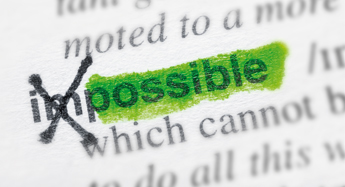Hearing, seeing, moving - the miracle of neural prosthetics
January 2015
When talking about developments in medical research and treatment it has become customary to hear used expressions such as "break-through", "revolution", "new paradigm" and "game-changer". Indeed, from the post-war generation onwards, the developed world has been treated to a series of advances in medical technology. Antibiotics, analgesics, non-steroidal anti-inflammatories, statins, SSRI's and SNRI's are just a few examples in the field of small-molecule pharmaceuticals. Newer to the scene are the cell-based therapies: stem cells; monoclonal antibodies; and in vitro fertilisation. A line can also be traced connecting these molecular biology based innovations back to the discovery of the structure of human DNA – through Sanger sequencing, DNA cloning and the polymerase chain-reaction; the elucidation of the human genome and projects such as the UK Governments 100,000 genomes project – to the ultimate goal of individualised medicine and gene therapy treatments that now seem in touching distance with the advent of CRISPR, the DNA loci.
There is another area of therapy that has, perhaps until very recently, been seen as the poorer relation to pharmaceutical, cell-based and genetic technology. This is prosthetics. With a history dating back to classical times, prosthetics in the modern era has at times seemed the preserve of technicians with screwdrivers and operations in workshops at the back of hospitals. Even if that were ever fair, it is certainly not seen that way anymore. This is due to the development of neural prosthetics. Some of the footage showing what neural prosthetics is already achieving for people with physical disabilities could add a new expression to the lexicon of medical advances: "jaw-dropping".
The science on which neural prosthetics is based actually has a relatively long history of its own. In 1791 the Italian physician Luigi Galvani discovered that nerves use electrical energy to make animal muscle move. Galvani accidentally noticed that the dismembered legs of a frog twitched when a spark was applied to the exposed sciatic nerve. In the following century, work conducted using the galvanometer (named after the Italian physician) allowed electrical nerve impulses to be identified as the signalling mechanism used by nerves to communicate with body tissue. Building on this work in the early 20th century, the further discovery was made that nerve activity moves in two directions: the brain sends signals along a motor nerve to a muscle; and, using a sensory nerve, the muscle sends information back to the brain about the degree of tension it is under.
Hearing
The work and discovery described above, led directly to an understanding of how sound in the ear is intelligible as words, music or noise. It is now understood that the percussive impact of sound on the eardrum results in the movement of fluid in the inner ear. In turn, this causes hair cells in the cochlea to bend and, under stress, create nerve impulses.
In experiments to investigate this mechanism, E. Glen Wever and Charles Bray connected electrodes to the auditory nerve of an anaesthetized cat, amplified the signals received and connected them to a telephone receiver. They were amazed to discover that when Wever spoke in the cat's ear, instead of hearing unintelligible noise, as the cat's auditory nerve discharged, Bray heard what Wever was saying.
 Following this discovery, researchers were asking whether it would be possible to remedy a damaged cochlea by stimulating the auditory nerve directly. Indeed, by the 1970s the first cochlear implants were available to aid hearing. Today tens of thousands of adults and children have cochlear implants, assisting with hearing loss caused by many conditions. The most astounding examples are those in which adults and children hear again after many years or even for the first time.
Following this discovery, researchers were asking whether it would be possible to remedy a damaged cochlea by stimulating the auditory nerve directly. Indeed, by the 1970s the first cochlear implants were available to aid hearing. Today tens of thousands of adults and children have cochlear implants, assisting with hearing loss caused by many conditions. The most astounding examples are those in which adults and children hear again after many years or even for the first time.
Seeing
Buoyed by success in the field of cochlea implants, there has been the separate challenge to find electronic eye prosthetics which can help the blind.
After decades of research on the eye, the retina was identified as the organ that converts light energy into the electrical impulses that can be received and interpreted by the brain. Photoreactive pigments in the rod and cone cells of the retina produce electrical impulses when hit by light. These signals are conducted to ganglion nerve cells from where they are sent to the optic nerve, which connects to the brain. The information received by the brain in this way is interpreted as an image. However, given that the optic nerve contains over a million nerve cells, (compared to some 30,000 cells in an auditory nerve) how could an organ of this sophistication be mimicked by an electrical device?
Research by Humayun and his team focussed on artificial retinas, using a miniature camera mounted on sunglasses to convert what is seen by the camera into digital signals that can be relayed to the brain. The camera films and sends digital signals of what it sees to a microprocessor. The microprocessor produces electrical signals that are sent to an inch-long retinal microelectrode array implanted in the patient's real retina. From here the signals are conducted to the ganglion cells and on to the brain.
Humayun's first tests on human patients in 2002 used an array of just 16 microelectrodes. This was sufficient for blind patients to distinguish between a cup, a plate and a knife, and detect movement. More recently another group has enabled a man to read his name. Having proved the concept, retinal microarrays are now being tested with hundreds of microelectrodes. It is thought that the brain's ability to fill in information gaps means that it may only require technology to advance the use of a few thousand electrodes to allow patients to distinguish between faces, rather than the millions initially suggested by the complexity of the optic nerve.
Moving
The realm of neural prosthetics has also played a part in assisting the physically disabled. Even the most sophisticated prosthetic arms, using systems of pulleys and motors have only enabled relatively limited movement. Reproducing the subtlety and complexity of even apparently simple tasks, such as raising a cup to the lips, would be a huge achievement using conventional engineering – the muscles of the hands, fingers and arms must all be coordinated perfectly; pressure and weight have to be judged, together with coordination of distance with the eyes. The challenge for bioengineers has been to try and recreate this sophistication using digital technology.
When an amputee loses a limb, the brain does not simply stop sending signals to that limb. Instead, an amputee continues to feel the need to move the missing limb and can still imagine that it is there. This continuing nerve signalling means bioengineers can seek to connect the signalling nerves with a mechanical arm. Again, the number of signalling channels needed to move an arm requires that multi-electrode arrays are needed to connect the remaining nerves with the prosthetic. A number of sensors in the prosthetic hand then ensure that information about what the hand is doing is returned to the brain, completing a full communication loop. The result is the astonishing ability of the amputee to control a prosthetic arm by just thinking about it. Recently, a Colorado man was even able to operate two limbs simultaneously.
Challenges
 Advances in pharmaceuticals and biotechnology and the drugs and treatments that result from them, remain as important as ever. But alongside them, stunning developments are occurring in prosthetics. Sophisticated combinations of computer programming, electronics and mechanics mean that the miracle of making people hear, see and move again has already been realised. It is a technology poised at that stage in its progress where one watching the footage of those seeing, hearing and moving again might say, "I thought this was only the stuff of science fiction".
Advances in pharmaceuticals and biotechnology and the drugs and treatments that result from them, remain as important as ever. But alongside them, stunning developments are occurring in prosthetics. Sophisticated combinations of computer programming, electronics and mechanics mean that the miracle of making people hear, see and move again has already been realised. It is a technology poised at that stage in its progress where one watching the footage of those seeing, hearing and moving again might say, "I thought this was only the stuff of science fiction".
It now remains for neural prosthetics to be ever more finely engineered to produce an experience for the patient that comes close to that which most of us take for granted. This process will take a huge and continuing research effort, and great financial investment will be needed, but there is every reason to suppose it should be successful. The technology involved will likely spread from overcoming deafness, blindness and physical disability to enhancement. As more devices become viable at commercially accessible prices, demand will increase and more businesses will be attracted to the field. This is where the more mundane, but difficult questions about regulations protect individuals and innovation will arise. Key issues in regulation and protection will be addressed in the next part of this article.
If you have any questions on this article or would like to propose a subject to be addressed by Synapse please contact us.


Paul England
Paul is a senior associate and professional support lawyer in the Patents group based in our London office.
"The technology involved will likely spread from overcoming deafness, blindness and physical disability to enhancement."
"... one watching the footage of those seeing, hearing and moving again might say, 'I thought this only the stuff of science fiction'."

